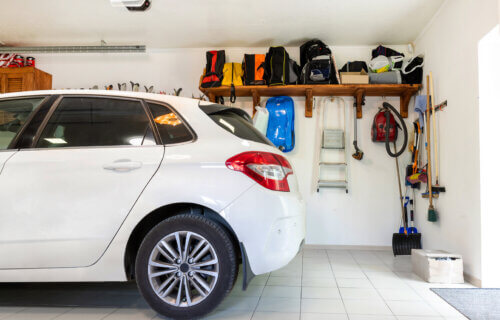ANN ARBOR, Mich. — Just how dangerous in the average suburban garage? Besides tool benches and power saws, concerning new research from the University of Michigan suggests many American garages may be harboring a serious health risk of a different variety. The latest from Michigan Medicine finds various common chemicals found in items typically stored within a home garage are linked to an increased risk of ALS.
This work is very much a continuation of earlier research performed at the University of Michigan over the past decade. Over that period, scientists have continually discovered that exposure to environmental toxins, ranging from pesticides used in agriculture to volatile organic compounds in the manufacturing industry, show a link to the development of the fatal motor neuron disease amyotrophic lateral sclerosis, or ALS. The new study is published in Amyotrophic Lateral Sclerosis and Frontotemporal Degeneration.
The habitual buildup of exposure, which researchers call the ALS exposome, shows a possible association with recreational activities like woodworking and gardening.
“Identifying disease-provoking exposures can inform and motivate interventions to reduce exposure, risk and, ultimately, the ALS burden,” says first author Dr. Stephen Goutman, director of the Pranger ALS Clinic and associate director of the ALS Center of Excellence at University of Michigan, in a media release. “Exposures in the home setting are an important part of the ALS exposome, as it is one place where behavior modifications could possibly lessen ALS risk.”
It is very common for garages to house items containing volatile chemicals, whether it’s in a car or motorcycle, equipment like a chainsaw, or solvents, cleaners, paints, or any number of additional items.
Researchers assessed exposures in the residential setting among a survey of over 600 participants – both with and without ALS. Via statistical analysis, this led to the finding that the storage of chemicals, including gasoline and gasoline-powered equipment, lawn care products, pesticides, paint and woodworking supplies, showed a significant association with ALS risk.

All reported chemicals showing a link to disease development were volatile with toxic components. The majority of participants reported storing several of such items in their attached garage. Importantly, though storing chemicals in a detached garage did not show as strong of a risk association.
Researchers add the flow of air and airborne pollutants from attached garages to the living space may explain their findings.
“Especially in colder climates, air in the garage tends to rush into the house when the entry door is opened, and air flows occur more or less continuously through small cracks and openings in walls and floors,” notes Stuart Batterman, Ph.D., senior author and professor of environmental health science at the U-M School of Public Health. “Thus, it makes sense that keeping volatile chemicals in an attached garage shows the stronger effect.”
The latest building codes, Prof. Batterman notes, address this problem by specifying measures to reduce or eliminate air flows.
“We are beginning to see risk factors across multiple settings that may associate with a greater ALS risk; we also see some relationships across the studies, for example, woodworking and woodworking supplies and gardening and lawn care supplies,” Dr. Goutman comments. “This begs the question: is it the activities that associate with ALS risk or the exposures to related products? This requires further research.”
In 2016, study authors uncovered that people with ALS show higher concentrations of pesticides in their blood in comparison to others without ALS. A follow-up study published in 2019 linked organochlorine pesticides and polychlorinated biphenyls, or PCBS, to worsening survival rates for ALS.
“With each study, we better understand the types of exposures that increase the risk of developing ALS,” concludes senior author Dr. Eva Feldman, director of the ALS Center of Excellence at UM. “We now need to build on these discoveries to understand how these exposures increase ALS risk. In parallel, we must continue to advocate to make ALS a reportable disease. Only then we will fully understand the array of exposures that increase disease risk.”

One of the most common types of chemicals found in garages is automotive fluids, including motor oil, transmission fluid, brake fluid, and coolant. These substances are essential for maintaining vehicles but can pose environmental hazards if not handled and disposed of properly. Spills and leaks can contaminate soil and water sources, posing risks to both human health and ecosystems. Proper storage, handling, and disposal of automotive fluids are essential to minimize these risks.